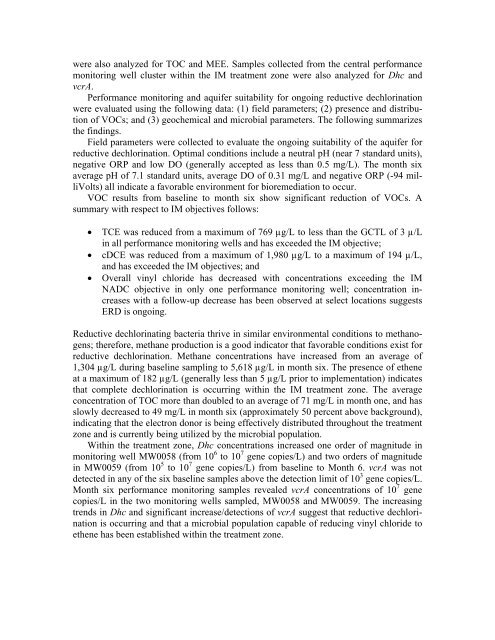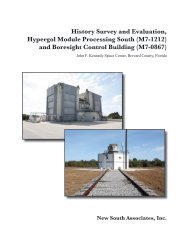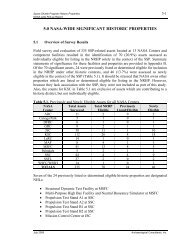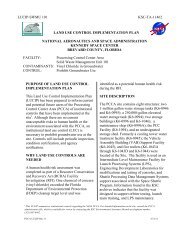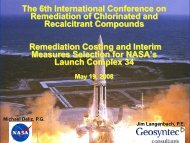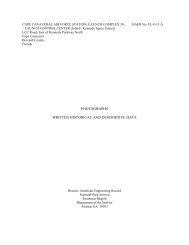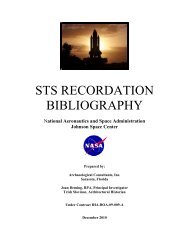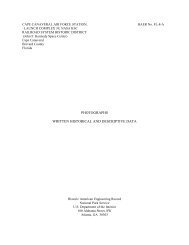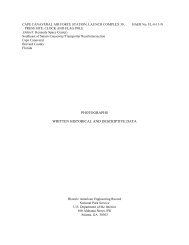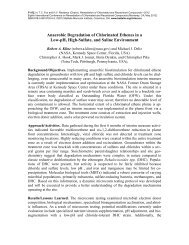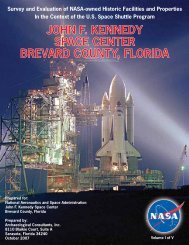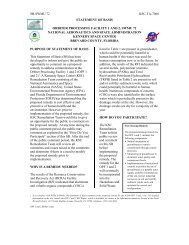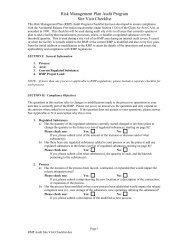Using Solar-Powered Groundwater Recirculation to Enhance ...
Using Solar-Powered Groundwater Recirculation to Enhance ...
Using Solar-Powered Groundwater Recirculation to Enhance ...
Create successful ePaper yourself
Turn your PDF publications into a flip-book with our unique Google optimized e-Paper software.
were also analyzed for TOC and MEE. Samples collected from the central performancemoni<strong>to</strong>ring well cluster within the IM treatment zone were also analyzed for Dhc andvcrA.Performance moni<strong>to</strong>ring and aquifer suitability for ongoing reductive dechlorinationwere evaluated using the following data: (1) field parameters; (2) presence and distributionof VOCs; and (3) geochemical and microbial parameters. The following summarizesthe findings.Field parameters were collected <strong>to</strong> evaluate the ongoing suitability of the aquifer forreductive dechlorination. Optimal conditions include a neutral pH (near 7 standard units),negative ORP and low DO (generally accepted as less than 0.5 mg/L). The month sixaverage pH of 7.1 standard units, average DO of 0.31 mg/L and negative ORP (-94 milliVolts)all indicate a favorable environment for bioremediation <strong>to</strong> occur.VOC results from baseline <strong>to</strong> month six show significant reduction of VOCs. Asummary with respect <strong>to</strong> IM objectives follows:• TCE was reduced from a maximum of 769 µg/L <strong>to</strong> less than the GCTL of 3 µ/Lin all performance moni<strong>to</strong>ring wells and has exceeded the IM objective;• cDCE was reduced from a maximum of 1,980 µg/L <strong>to</strong> a maximum of 194 µ/L,and has exceeded the IM objectives; and• Overall vinyl chloride has decreased with concentrations exceeding the IMNADC objective in only one performance moni<strong>to</strong>ring well; concentration increaseswith a follow-up decrease has been observed at select locations suggestsERD is ongoing.Reductive dechlorinating bacteria thrive in similar environmental conditions <strong>to</strong> methanogens;therefore, methane production is a good indica<strong>to</strong>r that favorable conditions exist forreductive dechlorination. Methane concentrations have increased from an average of1,304 µg/L during baseline sampling <strong>to</strong> 5,618 µg/L in month six. The presence of etheneat a maximum of 182 µg/L (generally less than 5 µg/L prior <strong>to</strong> implementation) indicatesthat complete dechlorination is occurring within the IM treatment zone. The averageconcentration of TOC more than doubled <strong>to</strong> an average of 71 mg/L in month one, and hasslowly decreased <strong>to</strong> 49 mg/L in month six (approximately 50 percent above background),indicating that the electron donor is being effectively distributed throughout the treatmentzone and is currently being utilized by the microbial population.Within the treatment zone, Dhc concentrations increased one order of magnitude inmoni<strong>to</strong>ring well MW0058 (from 10 6 <strong>to</strong> 10 7 gene copies/L) and two orders of magnitudein MW0059 (from 10 5 <strong>to</strong> 10 7 gene copies/L) from baseline <strong>to</strong> Month 6. vcrA was notdetected in any of the six baseline samples above the detection limit of 10 3 gene copies/L.Month six performance moni<strong>to</strong>ring samples revealed vcrA concentrations of 10 7 genecopies/L in the two moni<strong>to</strong>ring wells sampled, MW0058 and MW0059. The increasingtrends in Dhc and significant increase/detections of vcrA suggest that reductive dechlorinationis occurring and that a microbial population capable of reducing vinyl chloride <strong>to</strong>ethene has been established within the treatment zone.


